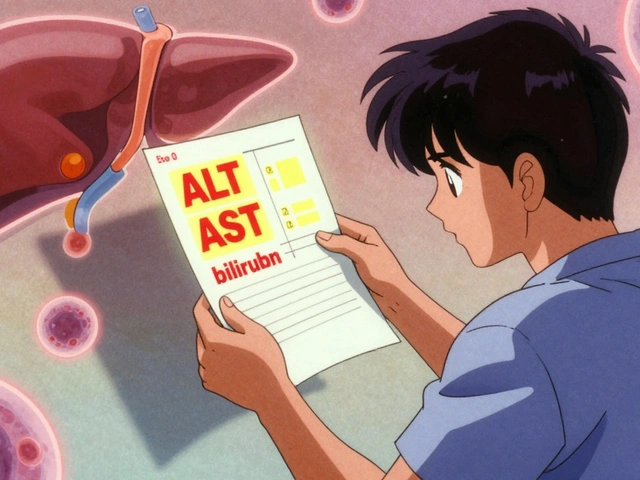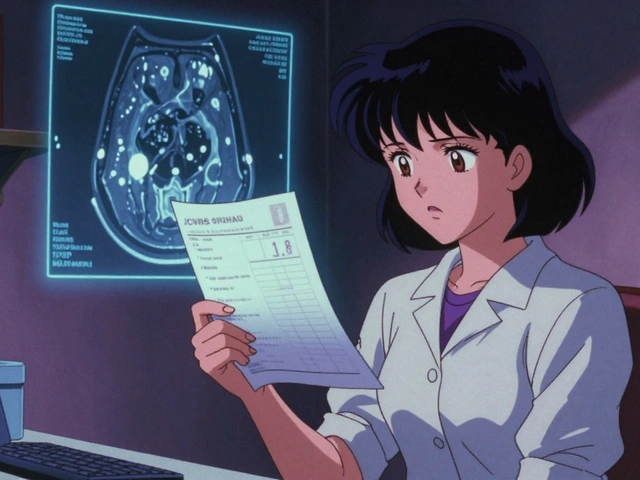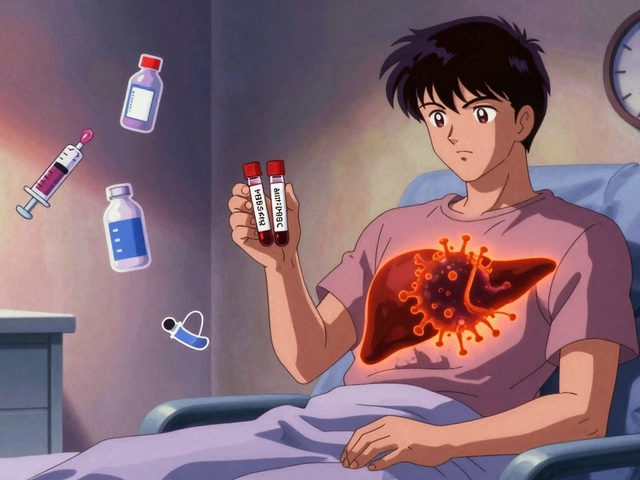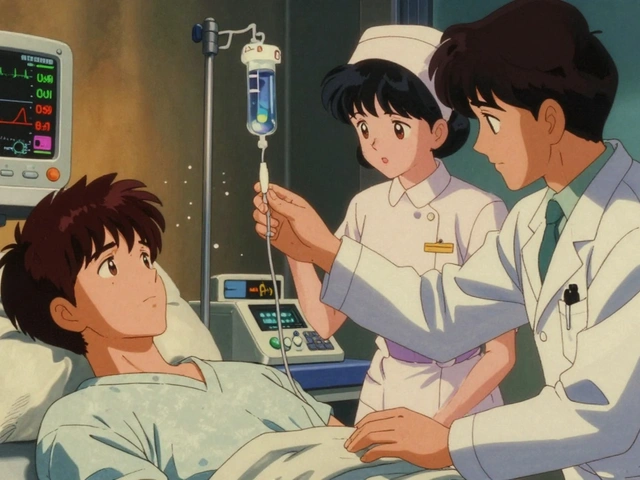
Every year, over 240 million people get malaria. Most of them live near standing water. That’s not a coincidence. Malaria isn’t the only disease tied to water-cholera, dysentery, typhoid, and schistosomiasis also thrive where water is dirty or stagnant. The link between malaria and waterborne diseases isn’t just about geography. It’s about how humans interact with water, how ecosystems change, and how poor infrastructure makes both problems worse.
Why Standing Water Means More Than Just Mosquitoes
Malaria spreads through mosquitoes, specifically the Anopheles species. These mosquitoes don’t fly far. They need calm, shallow water to lay eggs. Puddles after rain, unused tires, blocked gutters, rice paddies, and poorly maintained irrigation ditches are perfect breeding spots. But those same places often collect human waste, agricultural runoff, and plastic trash. That’s where waterborne pathogens like Vibrio cholerae and E. coli come in.
In rural villages in sub-Saharan Africa, families often collect rainwater in open containers. If the container isn’t covered, mosquitoes breed inside. If the water isn’t filtered, people drink it-and get sick. One container can hold both mosquito larvae and bacteria. A child might get bitten by a malaria-carrying mosquito in the evening and drink contaminated water the next morning. The two diseases don’t just coexist-they share the same root cause: lack of clean, controlled water.
Water Infrastructure Is the Missing Link
When communities lack piped water systems, people turn to rivers, ponds, or wells. Many of these sources are contaminated with fecal matter. In places like Bangladesh or rural India, people dig shallow wells near latrines because deep drilling is too expensive. The result? Waterborne diseases spike during the rainy season. At the same time, flooding creates new pools of stagnant water. Mosquito populations explode.
Studies from the World Health Organization show that areas with unreliable water access have 30% higher rates of both malaria and diarrheal diseases. That’s not correlation-it’s causation. When you can’t get clean water, you’re forced into a cycle where water-related diseases feed each other.
Even small fixes help. In Kenya, villages that installed covered water storage tanks saw a 40% drop in malaria cases over two years. Why? No open water meant no mosquito breeding. At the same time, diarrhea cases fell because people stopped drinking from muddy ponds.
Climate Change Is Making Both Problems Worse
Since 2020, temperatures in tropical regions have risen faster than the global average. Warmer air holds more moisture. Rainfall patterns are erratic-long dry spells followed by sudden floods. That’s the perfect storm for disease.
Higher temperatures speed up mosquito development. Anopheles eggs that used to take 10 days to hatch now hatch in 6. The mosquitoes also bite more often because they’re hungrier in the heat. Meanwhile, heavy rains wash sewage into drinking sources. Flooded homes become incubators for both malaria and cholera.
In 2024, Mozambique saw its worst malaria outbreak in a decade. It followed record-breaking floods. The same floods triggered a cholera outbreak that killed over 200 people. Health workers reported patients with both malaria parasites and Vibrio cholerae in their systems. They weren’t rare cases. They were the norm.

One Solution Doesn’t Fix Both
People assume that spraying insecticide or distributing bed nets will solve everything. It helps with malaria-but not with cholera. You can’t sleep under a net while drinking contaminated water.
Similarly, water filters and chlorine tablets stop diarrhea but do nothing to kill mosquito larvae. In fact, some water treatment programs accidentally make malaria worse. For example, in parts of Uganda, communities built concrete water channels to carry clean water. The channels had cracks. Rainwater pooled in them. Mosquitoes bred in the cracks. The clean water system became a mosquito factory.
Real progress needs integrated solutions. That means:
- Covering all water storage containers with fine mesh
- Draining standing water around homes weekly
- Installing proper sewage systems away from water sources
- Using larvicide in unavoidable standing water (like irrigation canals)
- Training community health workers to test water for both pathogens and larvae
One project in Tanzania combined all four. They trained women’s groups to inspect water storage, report breeding sites, and test water quality. Within 18 months, malaria cases dropped by 52%. Diarrheal diseases fell by 61%. The cost? Less than $2 per person per year.
Why This Isn’t Just a Health Problem
When kids get malaria or chronic diarrhea, they miss school. Parents miss work to care for them. Farmers can’t tend crops. Hospitals overflow. Economies stall. In countries like Nigeria and Malawi, water-related diseases cost more than 5% of GDP each year. That’s more than what most governments spend on education.
It’s also a gender issue. Women and girls spend hours each day collecting water. In some areas, they walk 5 kilometers to reach clean sources. That’s time they can’t spend learning, working, or resting. And every time they carry water home, they risk bringing home mosquitoes or germs.
Fixing water isn’t about building pipes. It’s about breaking cycles. When water is safe, children grow stronger. Women gain time. Communities become more resilient. And malaria? It becomes harder to spread.

What Works Now-And What Doesn’t
Some programs still treat malaria and waterborne diseases as separate issues. That’s like trying to put out two fires with one bucket of water. The best results come from integrated programs.
Here’s what’s working:
- Community-led total sanitation in Nepal: Villagers build their own latrines and cover water tanks. Malaria and cholera dropped together.
- Smart water sensors in Ghana: Devices alert health workers when water temperature or turbidity rises-signs of both contamination and mosquito breeding.
- Integrated vector and water management in Sri Lanka: Farmers drain rice fields between planting cycles. Mosquito numbers fell. Water quality improved.
What’s not working:
- Donating bed nets without teaching people how to store water safely
- Building wells without sewage systems nearby
- Using chemical larvicides without monitoring water quality
The biggest mistake? Assuming that one disease is more urgent than the other. They’re not. They’re two symptoms of the same broken system.
The Bottom Line
Malaria and waterborne diseases aren’t just linked. They’re twins born from the same neglect. You can’t eliminate one without fixing the other. Clean water doesn’t just prevent diarrhea. It breaks the mosquito’s life cycle. Proper drainage doesn’t just reduce flooding-it cuts malaria transmission.
The solutions exist. They’re simple. They’re cheap. What’s missing is the will to connect the dots.
Can clean water prevent malaria?
Yes, indirectly. Clean water doesn’t kill malaria parasites, but it stops mosquitoes from breeding. When water is stored in covered containers and there’s no standing water around homes, mosquitoes can’t lay eggs. In places like Kenya and Tanzania, covering water tanks cut malaria cases by 40% or more.
Do all waterborne diseases come from the same sources as malaria?
Not exactly. Malaria comes from mosquitoes breeding in water. Waterborne diseases like cholera and typhoid come from drinking water contaminated with human waste. But they often share the same environments-open water sources, poor sanitation, flooding. So while the causes are different, the conditions that create them are the same.
Is malaria a waterborne disease?
No. Malaria is a vector-borne disease, spread by mosquitoes. Waterborne diseases are spread by drinking or touching contaminated water. But malaria depends on water for mosquito breeding, so it’s closely tied to water conditions-even if it’s not directly transmitted through water.
Why do malaria and diarrhea spike at the same time?
Because heavy rains create stagnant water (good for mosquitoes) and wash sewage into drinking sources (bad for humans). In many places, the rainy season is when both diseases peak. It’s not random-it’s predictable. Health systems that prepare for both see fewer deaths.
Can I protect myself from both diseases with one action?
Yes. Cover water storage containers with fine mesh or lids. Drain puddles and ditches around your home every week. Use safe sanitation (toilets, not open defecation). These steps stop mosquitoes from breeding and prevent fecal contamination of water. That’s two diseases, one habit.





14 Comments
So let me get this straight... we're spending billions on bed nets while kids drink mosquito soup out of open buckets? 🤦♀️ I mean, sure, let's keep treating symptoms when a lid and a mesh net cost less than a latte. #FirstWorldProblems
The data's solid but the real issue? We keep treating this like a medical problem, not a systems failure. You don't fix a leaking roof by handing out umbrellas. Covering tanks? Draining puddles? That's not rocket science-it's basic infrastructure. Why is this even a debate?
I love how this post breaks it down so clearly. Seriously, the fact that covering water tanks dropped malaria by 40% in Kenya? That’s not luck-that’s smart, simple action. We need to stop overcomplicating this. One habit: cover your water. One result: fewer dead kids. It’s that direct.
This is all just a distraction from the real agenda... who funds these water projects? Who controls the pumps? Who gets the contracts? They want you thinking about mosquitoes while they reroute the rivers... and your taxes... and your children's future... don't you see it??
Honestly, this is why the Global South remains backward. No one takes responsibility. In India, we have ancient water management systems-stepwells, tanks, channels-that worked for centuries. Now we import ‘solutions’ from NGOs who don’t even know how to pronounce ‘monsoon’. It’s pathetic.
The tragedy isn’t the disease-it’s the illusion that we can ‘solve’ it without confronting the deeper rot. We treat symptoms like commodities, not consequences. Water isn’t just a resource-it’s a mirror. What we do to it, we do to ourselves.
Clean water breaks cycles. Not just disease cycles. Time cycles. Gender cycles. Economic cycles. When a girl doesn’t walk five kilometers for water, she becomes a student. A worker. A leader. This isn’t charity. It’s evolution.
You can’t fix a broken system with band-aids. Bed nets are a band-aid. Chlorine tablets are a band-aid. What we need is a new relationship with water-not as a thing to be controlled, but as a rhythm to be respected. The ancients knew this. We forgot.
Let’s be real-this is just another way for the UN to funnel billions into ‘development’ projects while African leaders get richer. You think they care if a kid gets malaria? Nah. They’re too busy building villas in Dubai. This whole thing’s a scam.
I’ve worked in rural Ghana for eight years. The moment a village installed covered tanks and weekly drainage checks, everything changed. Not because of tech. Not because of donors. Because the women decided they were done watching their children cough and shiver. They took charge. That’s the real solution right there.
I know it’s easy to feel overwhelmed but here’s the thing-you don’t have to fix everything. Just start with one thing. Talk to your local council. Push for covered storage in community centers. Volunteer with a group that trains women in water safety. Small steps, but they compound. You’re not powerless. You’re just waiting to act.
Westerners love to preach about ‘simple solutions’ while ignoring that Africa has been fighting this for decades. Who gave you the right to tell us how to manage our water? We’ve got our own science, our own traditions, our own resistance. Your ‘mesh lids’? Cute. But you didn’t build the damn infrastructure that made this necessary in the first place.
The most overlooked point in this entire post is the economic cost-over 5% of GDP in some countries. That’s not just health. That’s education, productivity, innovation-all crushed under the weight of preventable disease. Fixing water isn’t altruism. It’s fiscal responsibility. And yet, we treat it like a charity case. We’re not just failing people. We’re failing ourselves.
I’ve seen the reports. The WHO data. The studies. But I’ve also seen the satellite images. The water tanks are being monitored by drones. The sensors are transmitting data to satellites. Who’s watching that data? Who owns it? This isn’t public health. It’s surveillance with a side of charity.